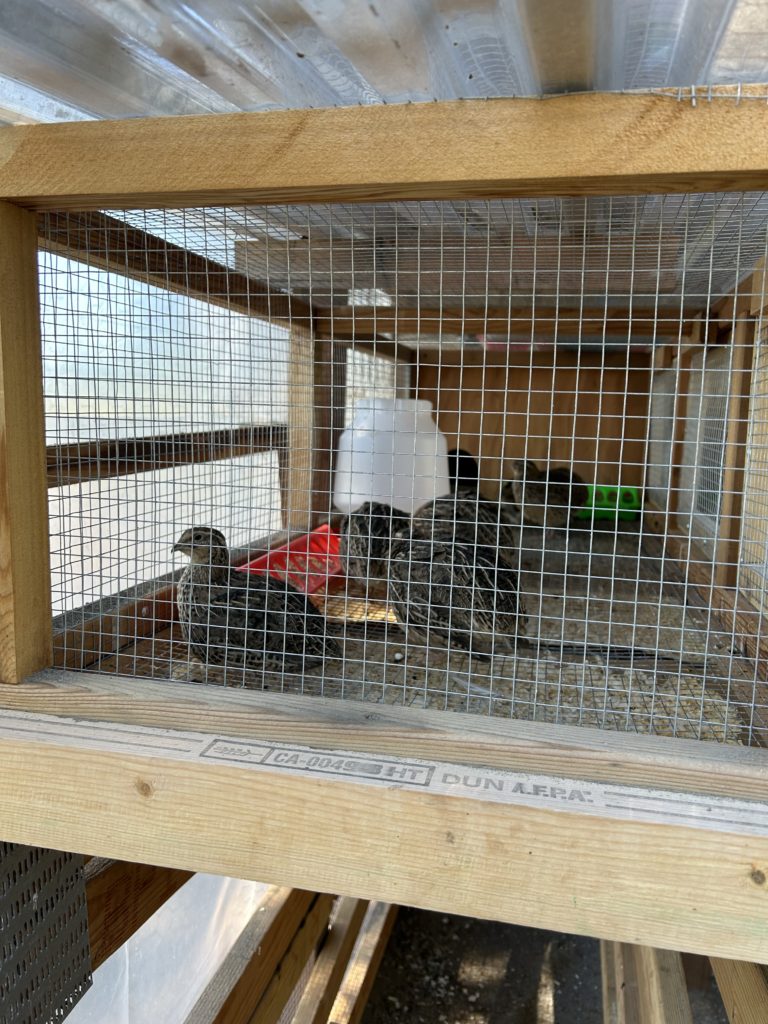A common question many new quail keepers have is, “When can coturnix quail go outside?” In this article, we’ll delve into the optimal age, conditions, and precautions to consider when introducing your quail to the outdoor environments.
Understanding the Life Stages of Coturnix Quail
Before determining when your quail can venture outside, it’s essential to understand their life stages:
Quail Chicks (0-3 weeks): Newly hatched quail are incredibly delicate. Quail Chicks lack the full feathering to insulate them from cold and are susceptible to various environmental factors.
Juvenile Quail (3-6 weeks): During this phase, quail begin to develop more feathers and grow rapidly, but they’re still not fully equipped to handle all the challenges of the outdoors.
Adults Quail (6 weeks and older): By this age, coturnix quail are fully feathered and more resilient, making them better suited for outdoor life.
When to Introduce Coturnix Quail to the Outdoors
Age Consideration: Ideally, coturnix quail should be at least 6-8 weeks old before they’re introduced to the outdoors. By this age, they have a robust feather covering, which provides insulation and protection.
Weather and Season: The time of year and prevailing weather conditions play a crucial role. Spring and summer are the best seasons to introduce coturnix quail to the outdoors, as the temperatures are milder. Avoid transitioning them during extreme cold, heat, or rainy seasons.
Gradual Introduction: Instead of directly moving them outside, consider a gradual introduction. Start by letting them out for a few hours during the warmest part of the day and increase the duration over a week.
Precautions
Safe Enclosure: Ensure that the outdoor space is predator-proof. Quail are ground-dwelling birds and can be vulnerable to predators like cats, dogs, and birds of prey. A secure pen with a mesh or netted top is essential.
Shelter: Provide adequate shelter from the elements. This includes shaded areas for hot days and windbreaks for cooler days.
Monitor First Outings: For the first few outdoor excursions, monitor your quail closely. Observe their behavior to ensure they’re comfortable and not showing signs of stress or discomfort.
Access to Food and Water: Ensure that your quail have easy access to fresh water and their regular feed. This will help them acclimate better to their new environment.
Night-time Safety: Until you’re sure of the safety of your outdoor setup, consider bringing your quail inside or to a secure location during the night.
Benefits of Taking Coturnix Quail Outside
Natural Behavior: The outdoors provides quail with an opportunity to exhibit natural behaviors like dust bathing, foraging, and exploring.
Health Benefits: Exposure to natural sunlight boosts vitamin D production, which is essential for bone health and overall well-being.
Stimulation: The varied environment outside can provide mental stimulation, reducing the chances of stress or aggressive behavior.
In Conclusion
Introducing your coturnix quail to the outdoors is a rewarding experience that offers numerous benefits. However, it’s essential to ensure that the transition is smooth, safe, and stress-free for your feathered friends. With the right precautions and a keen understanding of their needs, your quail can enjoy the best of both indoor and outdoor worlds.
